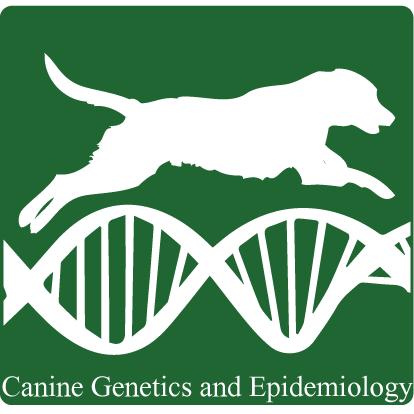Spaying and neutering of dogs is a well-accepted procedure in the United States and has many positive effects on behavior, health, and longevity. Although recent reports suggest that spaying and neutering may increase the occurrence of some joint disorders and some cancers, the relationship between inherited diseases and spay/neuter status has not fully been explored. The present study evaluated the prevalence and risk of genetic diseases, both early and late onset, in intact and neutered male and female dogs that were seen over a 15-year period at a university teaching hospital. Spayed and neutered dogs were at less risk for early and congenital conditions (aortic stenosis, early onset cataracts, mitral valve disease, patent ductus arteriosus, portosystemic shunt, and ventricular septal defect) than intact dogs. Neutered male dogs were at less risk for bloat (gastric dilatation volvulus) and dilated cardiomyopathy, whereas spayed females were at increased risk for intervertebral disk disease. Spaying or neutering in both sexes was significantly associated with an increased risk for cancers (hemangiosarcoma, hyperadrenocorticism, lymphoma, mast cell tumor, and osteosarcoma), ruptured anterior cruciate ligament, and epilepsy. For elbow dysplasia, hip dysplasia, lens luxation, and patellar luxation neutering had no significant effect on the risk for those conditions. A dog that was spayed or neutered was associated with a reduced risk of vehicular injury, a condition chosen as a control. The complexity of the interactions between spaying/neutering and inherited conditions underscores the need for reflective consultation between the client and the clinician when considering the procedure. The convenience and advantages of spaying or neutering dogs that will not be included in a breeding program must be weighed against possible risk associated with the procedure. Additionally, if owners elect to keep their dogs intact, they must then assume responsibility to vigilantly guard against unplanned litters.
 Correlation of neuter status and expression of heritable disorders
Correlation of neuter status and expression of heritable disorders

 Donate
Donate
Recommended Comments
There are no comments to display.
Join the conversation
You can post now and register later. If you have an account, sign in now to post with your account.
Note: Your post will require moderator approval before it will be visible.